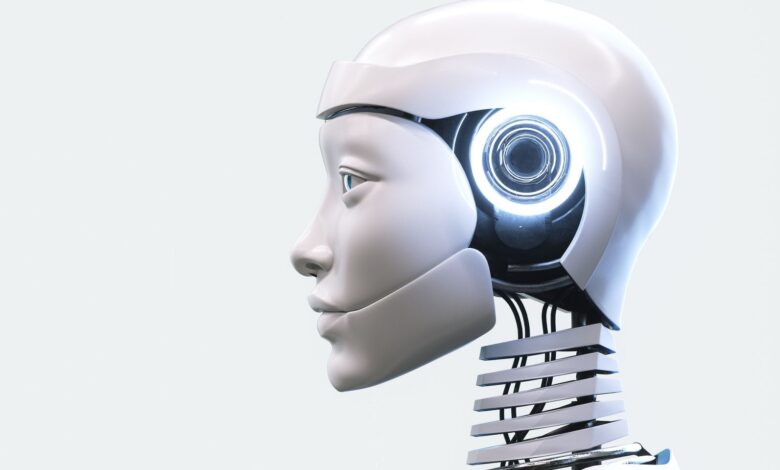The future is about artificial intelligence, and blockchain should be too

Every few decades, a new technology emerges that changes everything: the personal computer in the 1980s, the Internet in the 1990s, and the smartphone in the 2000s. As AI agents ride a wave of excitement through 2025, the tech world is wondering not only if but when AI agents will similarly reshape our lives.
But despite all the excitement, the promise of decentralized agents has yet to be fulfilled. Most so-called agents today are little more than chatbots or glorified co-pilots, incapable of true autonomy and handling complex tasks – not the autopilots that true AI agents should be. So, what is holding back this revolution, and how do we move from theory to reality?
Current reality: True decentralized agents do not yet exist
Let’s start with what exists today. If you’ve been scrolling through X/Twitter, you’ve probably seen a lot of posts about bots like Truth Terminal and Freysa. They are very clever and engaging thought experiments, but they are not decentralized clients. Not even close. What they are are semi-scripted robots shrouded in mystery, unable to make autonomous decisions and carry out tasks. As a result, they cannot learn, adapt, or execute dynamically, at scale or otherwise.
Even the most serious players in the AI blockchain space have struggled to deliver on the promise of truly decentralized agents. Since traditional blockchains have no “natural” way to process AI, many projects end up taking shortcuts. Some focus narrowly on verification, ensuring the reliability of AI outputs but failing to provide any meaningful benefit once that output is brought into the chain.
Others emphasize implementation but skip the crucial step of decentralizing the AI inference process itself. Often, these solutions operate without validation tools or consensus mechanisms for AI outputs, effectively sidestepping the core principles of blockchain technology. These makeshift solutions may create flashy titles with a strong narrative and a sleek viable product (MVP), but they ultimately lack the substance needed for real-world utility.
These challenges in integrating AI with blockchain technology are due to the fact that today’s Internet is designed with human users in mind, not AI. This is especially true when it comes to Web3, since blockchain infrastructure, which is supposed to run silently in the background, is instead pulled to the front end in the form of legacy user interfaces and manual cross-chain coordination requests. AI agents do not adapt well to messy data structures and UI patterns, and what the industry needs is a radical rethink of how AI and blockchain systems are built to interact.
What AI agents need to succeed
For decentralized agents to become a reality, the infrastructure that supports them needs an overhaul. The first and most important challenge is to enable blockchain and AI to “talk” to each other seamlessly. AI generates probabilistic outputs and relies on real-time processing, while blockchains require deterministic outcomes and are limited by transaction finality and throughput constraints. Closing this gap requires tailored infrastructure, which I discuss in more detail in the next section.
The next step is scalability. Most traditional blockchains are very slow. Sure, it works well for human-driven transactions, but agents work at machine speed. Processing thousands – or millions – of interactions in real time? No chance. Therefore, the reimagined infrastructure must provide programmability for complex multi-threaded tasks and the scalability to handle millions of agent interactions without bottlenecking the network.
Then there is programmability. Today’s blockchains rely on rigid smart contracts, which are great for straightforward tasks but insufficient for the complex, multi-step workflows that AI agents require. Think of an agent managing a DeFi trading strategy. It can’t just execute a buy or sell order, it needs to analyze data, validate its model, execute cross-chain trades, and adjust based on real-time conditions. This far exceeds the capabilities of traditional blockchain programming.
Finally, there is reliability. AI agents will eventually be tasked with high-risk operations, and mistakes will be inconvenient at best, devastating at worst. Existing systems are prone to errors, especially when incorporating output from large language models (LLMs). One wrong prediction, and an agent can wreak havoc, whether it’s by draining the DeFi pool or implementing a flawed financial strategy. To avoid this, the infrastructure needs to include automated guardrails, real-time validation, and debugging built into the system itself.
All of this should be integrated into a robust developer platform with solid alternatives and on-chain infrastructure, so developers can build new products and experiences more efficiently and cost-effectively. Without it, AI will remain stuck in 2024, relegated to co-pilots and toys that barely scratch the surface of what’s possible.
An integrated approach to address the complex challenge
So what does this agent-centric infrastructure look like? Given the technical complexity of integrating AI with blockchain, the best solution is a customized, integrated approach, where every layer of infrastructure – from consensus mechanisms to developer tools – is optimized to meet the specific requirements of autonomous agents.
In addition to the ability to orchestrate a multi-step workflow in real-time, AI chains must first include a proof system capable of handling a variety of machine learning models, from simple algorithms to advanced AI. This level of liquidity requires a comprehensive infrastructure that prioritizes speed, composability, and scalability to allow agents to navigate and operate within a fragmented blockchain ecosystem without any specialized modifications.
AI chains must first address the unique risks posed by integrating master’s degree holders and other AI systems. To mitigate this, AI chains must first include safeguards at every layer, from validating inferences to ensuring alignment with user-specified goals. Priority capabilities include real-time error detection, decision validation, and mechanisms to prevent agents from acting on false or malicious data.
From telling stories to building solutions
2024 saw a lot of early hype around AI agents, and 2025 is when the Web3 industry will actually earn it. It all starts with a radical reimagining of traditional blockchains where every layer — from on-chain execution to the application layer — is designed with AI agents in mind. Only then will AI agents be able to evolve from entertaining robots to indispensable operators and collaborators, redefining entire industries and upending the way we think about work and play.
It is increasingly clear that companies that prioritize true and robust blockchain-AI integrations will dominate the landscape, providing valuable services that would be impossible to deploy on a traditional blockchain or Web2 platform. Against this competitive backdrop, the shift from human-centric to customer-centric systems is not optional; It’s inevitable.
https://cdn.sanity.io/images/s3y3vcno/production/61080bf60d8cbfb426fef3f8a0a51c3168ad279f-1707×960.jpg?auto=format

